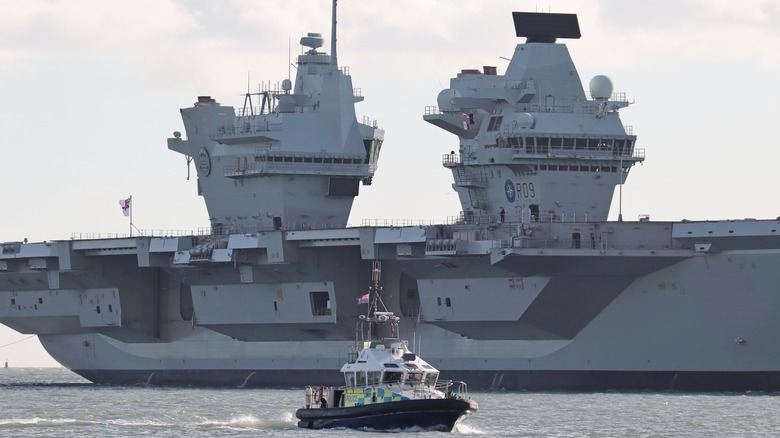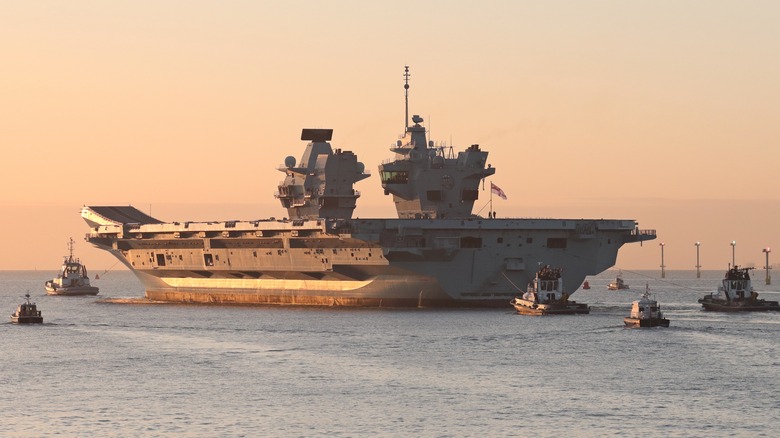The Reason Why British Aircraft Carriers Have Two Islands
An aircraft carrier's island — the superstructure rising high above the flight deck — is one of the most important areas of the ship. It contains various radar and communication equipment for managing flight deck operations and the bridge.
One less glamorous aspect of the island is that it also contains a system of pipes called trunking that carries exhaust away from the engines and delivers a constant supply of fresh air. When the British Royal Navy was in the early stages of designing the Queen Elizabeth-class aircraft carrier in 2001, an important consideration was the increased separation between the forward and rear engine compartments. Redundant engine compartments have long been a feature of military vessels. If one engine compartment is damaged, the remaining propulsion system can continue to operate the ship.
On an aircraft carrier, in particular, funneling the exhaust out of the engine rooms is challenging because so much of the deck space is dedicated to the takeoff and landing of fighter jets. Previously, separate redundant engine rooms were accommodated by a very long island spanning both engine compartments. Unfortunately, that proved less than optimal for maximizing flight deck real estate.
Another proposed alternative was for the trunking from each engine compartment to take a longer, convoluted path to exit through a single smaller space, but the diameter of the trunking would have been a massive 2.4 meters, eating into the below-deck space. Also, there were limitations on the number of angles they could have used for the trunking.
Though odd looking, the benefits are many
Ultimately, the British developed a simple yet ingenious approach: two separate islands with independent exhaust and air intake systems. The two smaller islands have several advantages over a single large island, including reduced wind turbulence.
The two islands have a smaller combined footprint than a single large island, freeing up space on the flight deck and allowing each unit to be fully constructed off-site. Finally, powerful radar systems can be mounted to each island, reducing the interference that would be present if the radars were mounted closer together in a shared space.
If there are any drawbacks to this design, it's that navigation is typically handled from the front island, and aircraft operating is handled from the rear island. Since a joint effort between the two is often required during missions, communication that previously would have been in-person is now carried out via heavy reliance on an intercom. Some aircraft carrier enthusiasts opine that the two islands detract from a carrier's good looks, but that may simply be a matter of getting used to.
To date, two Queen Elizabeth-class carriers are employing this innovative approach. The lead ship HMS Queen Elizabeth and the later HMS Prince of Wales, were commissioned in 2017 and 2019, respectively. Besides the dual islands, other crew facilities include a cinema, five gyms for exercise, and four galleys with a staff of 27.

